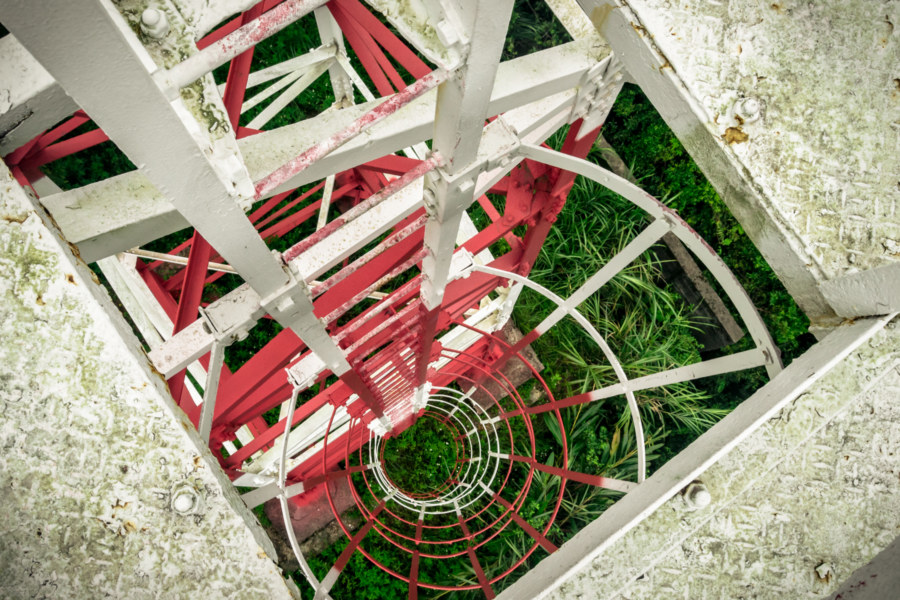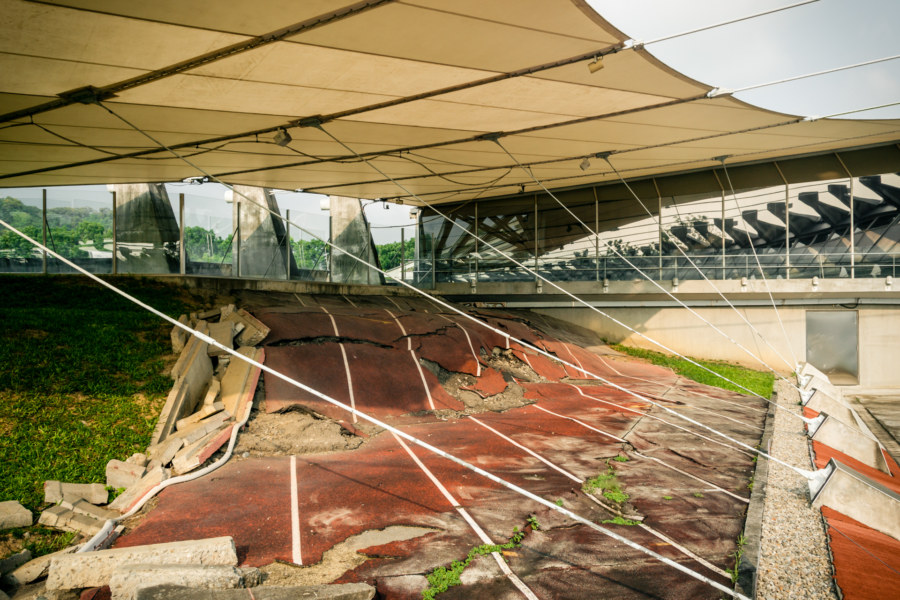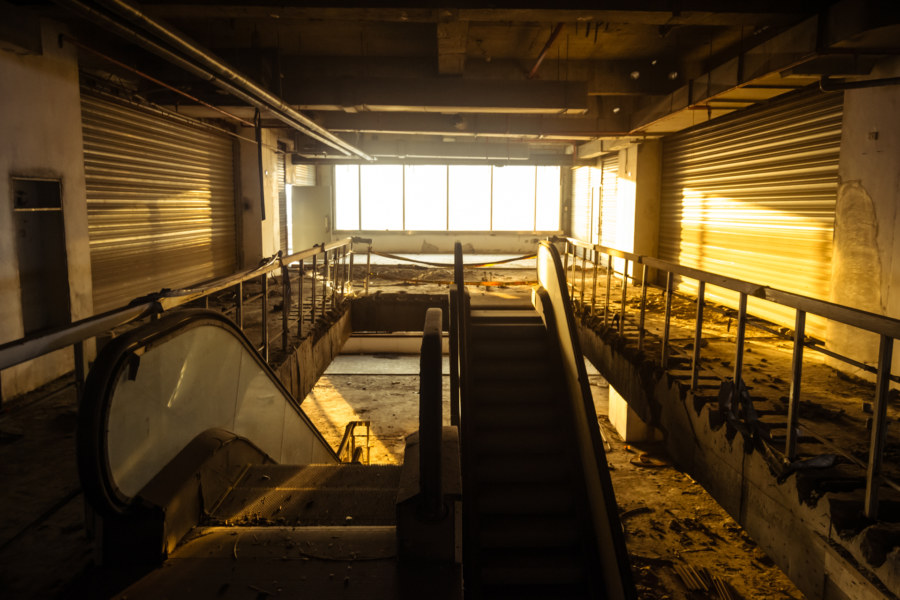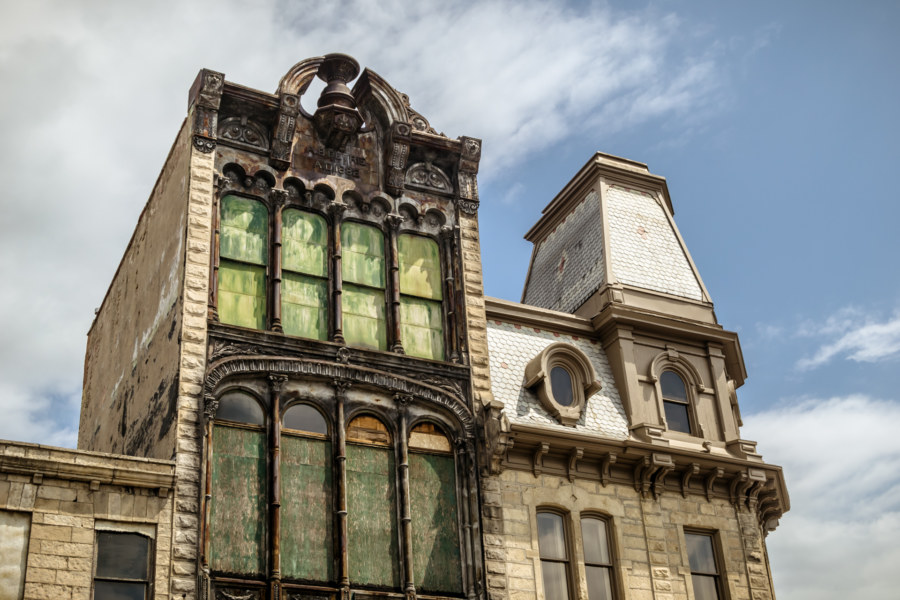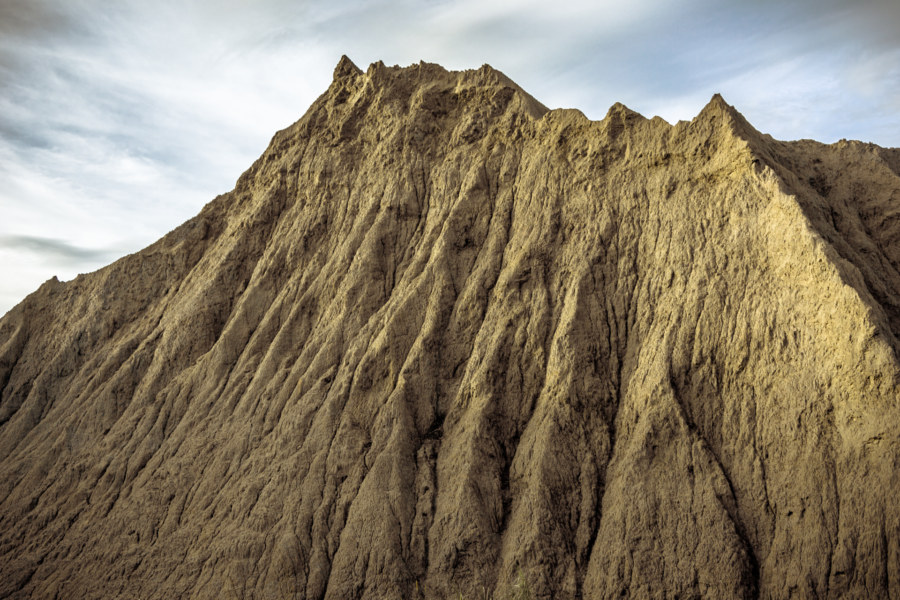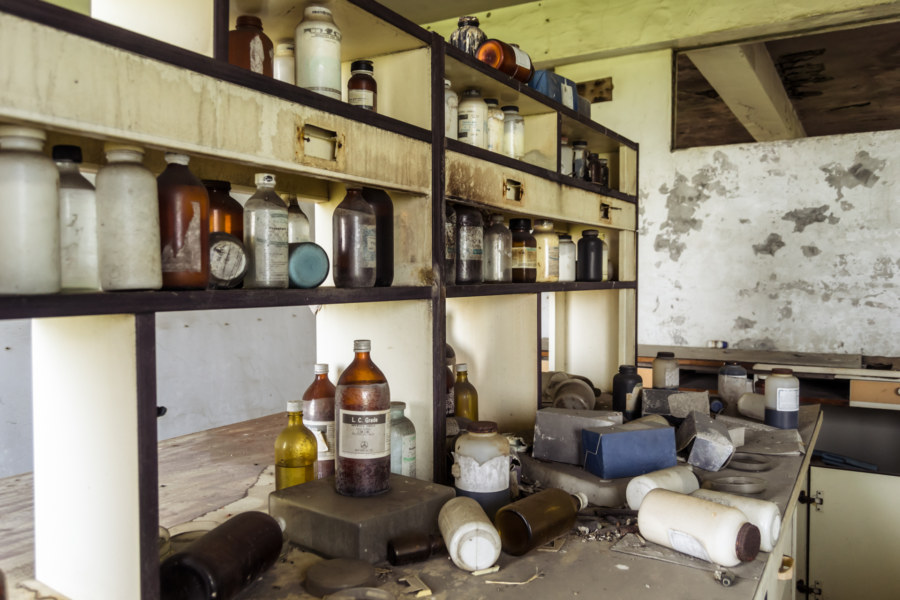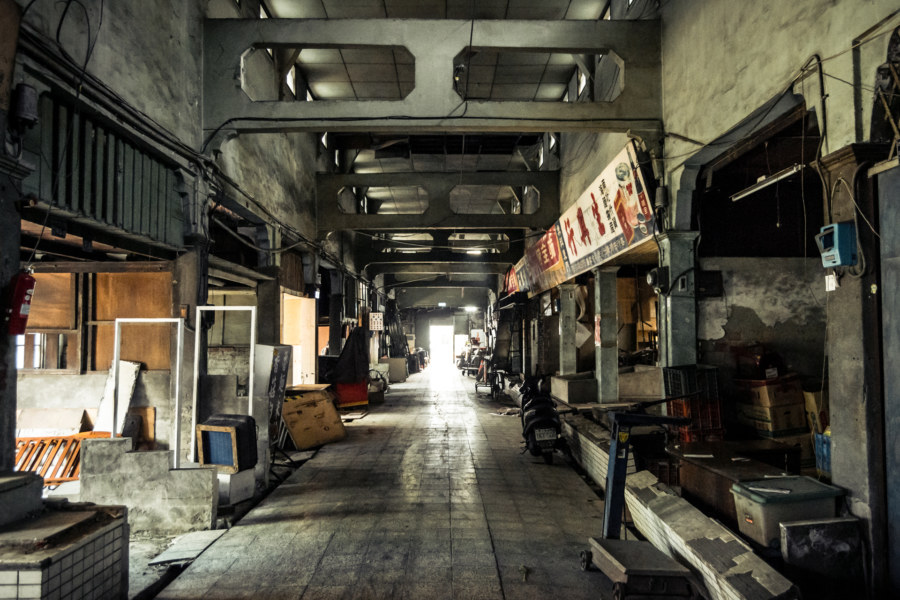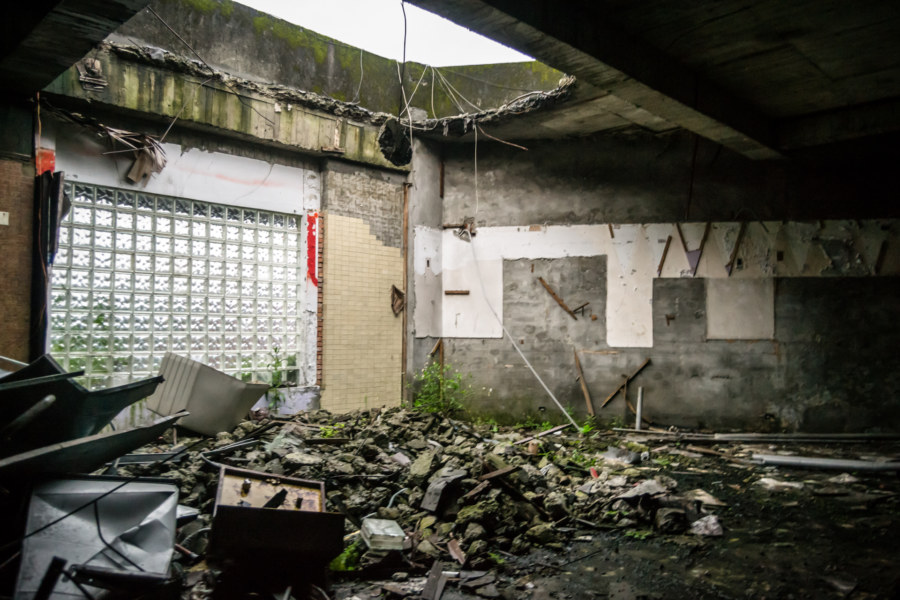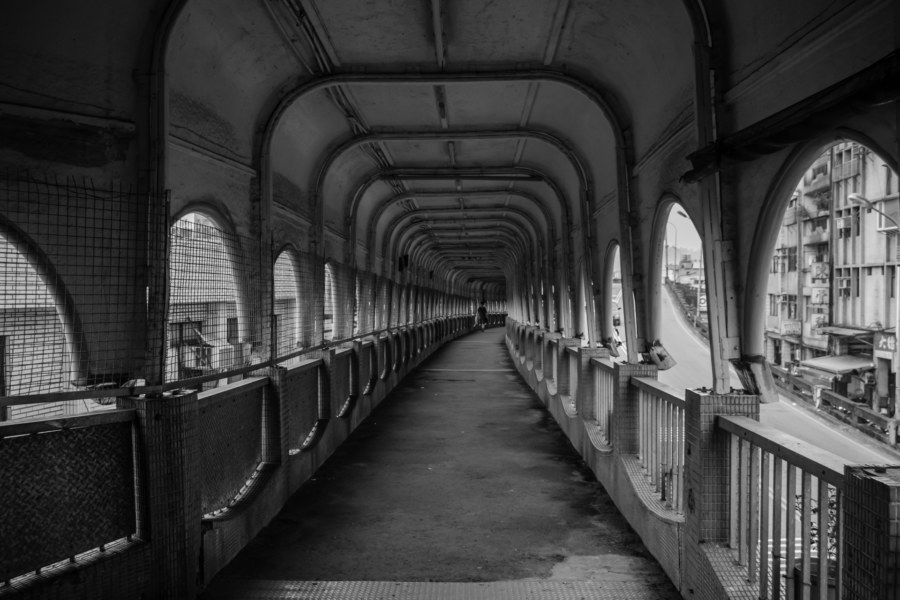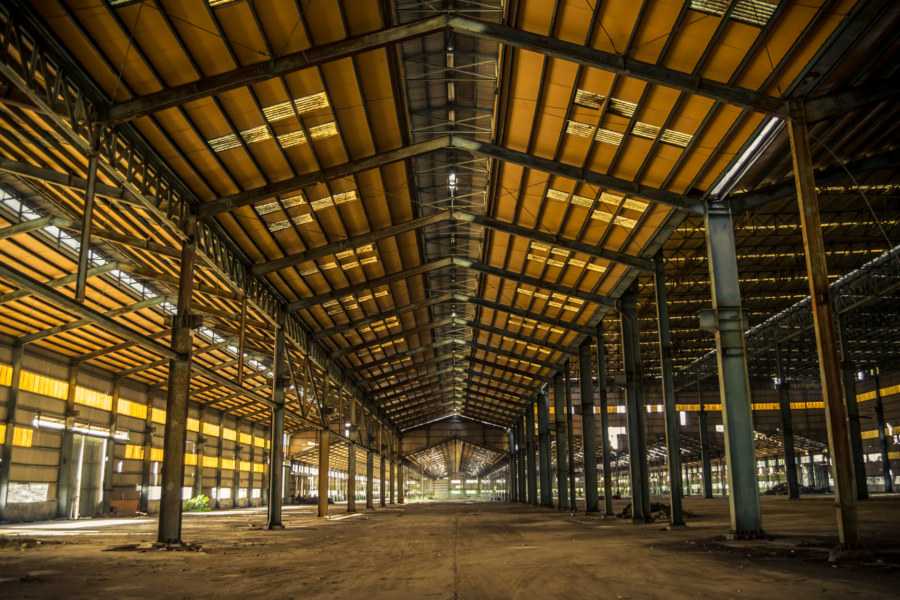Yesterday I went out with a friend to explore several abandoned and neglected sites in Hsinchu, Taiwan. Our first stop was one of many mothballed cable car 空中纜車 towers in Guanxi connecting a stone quarry near Yùshān Village 玉山里 (formerly known as Chìkēshān 赤柯山) with a cement plant next to Jiǔzàntóu Station 九讚頭車站 in Hengshan. There seems to be no general agreement about the formal name for the system so I’m picking one of many options and dubbing this the Asia Cement Aerial Tramway 亞泥空中纜車 for the sake of simplicity.
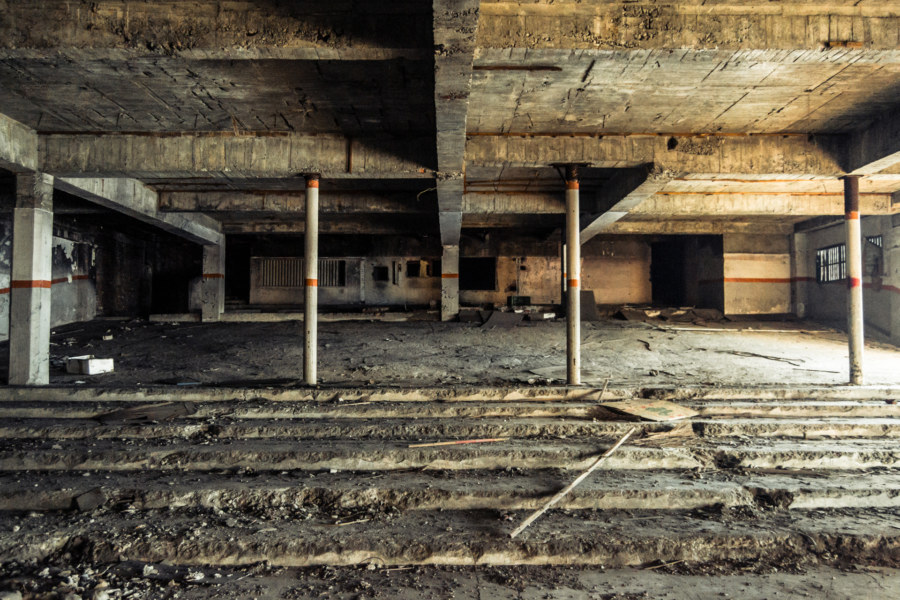
Urban exploration or urbex (Chinese: 城市探險 or 廢墟探險; Japanese: haikyo 廃墟) is the exploration of manmade structures and artificial environments, particularly those found beyond the margins of everyday society. This includes abandoned and disused spaces but also rooftops, underground infrastructure, and many other places not normally open to casual examination. Despite the name the practice is not limited to cities, nor is the focus exclusively on abandoned places. Urbex culture varies across the globe but one unifying convention most explorers adhere to is "take nothing but pictures, leave nothing but footprints".
Subterms
921 Earthquake Museum 九二一地震教育園區
Deep in the night on September 21st, 1999, the devastating 921 Earthquake ripped through central Taiwan. Thousands were killed, hundreds of buildings collapsed, and entire towns were leveled to the ground, particularly in Nantou and Taichung. Nowadays there are many reminders and memorials to the disaster scattered across the region, among them the 921 Earthquake Museum 九二一地震教育園區 (Chinese version; official site) in Wufeng, which I visited in June 2014.
Fuyou Building 富有大樓
At the end of a bicycle trip to Taitung City in the spring of 2015 I went wandering near the old train station, which had been transformed into the Taitung Railway Art Village 台東鐵道藝術村 in 2004. I had a hunch I might find some hulking derelict near former station front, perhaps an entertainment complex or shopping center in terminal decline, for the new Taitung Station is located far outside the downtown core. Sure enough, within minutes I noticed the telltale signs of decay on a large commercial building several streets over from the art village. This turned out to be the Fùyǒu Building 富有大樓, a genuine mosquito museum 蚊子館 built in the early 1990s under shady circumstances. It was later abandoned and has since become an eyesore and public health menace as well as a political hot potato for local officials.
Impressions of Historic Guelph
Exploring the Badlands of Southern Taiwan
The badlands of Taiwan are one of the nation’s most captivating and unusual landscapes. While there are several scattered around the country the most extensive badlands can be found along the hilly borderlands of Tainan and Kaohsiung. Known locally to Taiwanese as “moon worlds” (yuèshìjiè 月世界), these landscapes are composed of weathered mudstone outcrops that erode too quickly for plants to grow.
Peiyuan Industrial Aquaculture Factory 培源殖產工廠
Bicycle touring is one means by which I discover many abandoned places in Taiwan. Ride in just about any direction long enough, keep your eyes peeled, and you’re bound to encounter the telltale signs of decay and neglect sooner or later. Such was the case one fine morning in June 2015 when I set out to have breakfast in Fangliao, a small town along the coast of central Pingtung, while en route to Hengchun, at the southern tip of the island. I had barely been awake for half an hour when I noticed this partially overgrown ruin along the roadside.
Tainan West Market 台南西市場
West Market 西市場 is a historical site in downtown Tainan dating back to the earliest years of the Japanese colonial era. The first market building at this location was constructed in 1905, back when it fronted onto the milkfish farms of the Táijiāng Lagoon 台江內海. It suffered extensive damage when a catastrophic typhoon struck Tainan in August 1911. An expanded L-shaped structure was built in 1912, making it the largest market in southern Taiwan, but this was damaged by another typhoon in 1920, leading to another round of reconstruction, the results of which are still standing today. The old marketplace remains a hub of commercial activity in this part of the city—but many of its stalls were neglected or abandoned by the mid-2010s, when many of the photos in this article were captured. Presently the old market enjoys heritage status—and an extensive restoration effort was completed in 2020, transforming it into a bright and airy space.
Tongyi Bowling Alley 統一保齡球館
Keelung, like many cities in Taiwan, is a dark wonderland for urban exploration. You can hardly turn around without sighting yet another hulking ruin calling out to be entered. Most of these buildings are so decrepit that little remains to indicate what its purpose once was—a direct consequence of Keelung’s incessant rain and gloom. The process of decay works at a feverish pace in this grim port city, rapidly eroding evidence of human occupation in any abandonment exposed to the elements.
An Iconic Pedestrian Bridge in Keelung
It’s grim up north. But that same darkness keeps me coming back to Keelung, Taiwan’s most important northern port, to explore its dense, multi-layered urban core. Pictured here is a long pedestrian overpass that snakes around and over the railway station for about 200 meters. It is visible on Google’s satellite view, running the length of Keelung’s Zhongshan Bridge 基隆中山陸橋 (also known as the Keelung Train Station Bridge 基隆火車站陸橋). After posting this photo on Flickr a visitor pointed out that this is the same pedestrian bridge featured in Millennium Mambo 千禧曼波 (watch the introduction on YouTube and you’ll see it). I was going to post it anyway but this adds another layer of meaning to this obscure work of urban psychogeography.
Yutian Automotive Factory 羽田汽車工廠
The massive ruins of the Yǔtián Automotive Factory 羽田汽車工廠 are located on the Dayeh University campus in Dacun, Changhua. There are four main buildings, each approximately 360 meters in length and 90 meters across for an estimated total of 32,500 square meters apiece. Outside of the Changhua Coastal Industrial Park 彰化濱海工業區 in Lukang (which opened in 1995) these buildings are probably the largest in the county—and the entire complex is readily visible from space.
